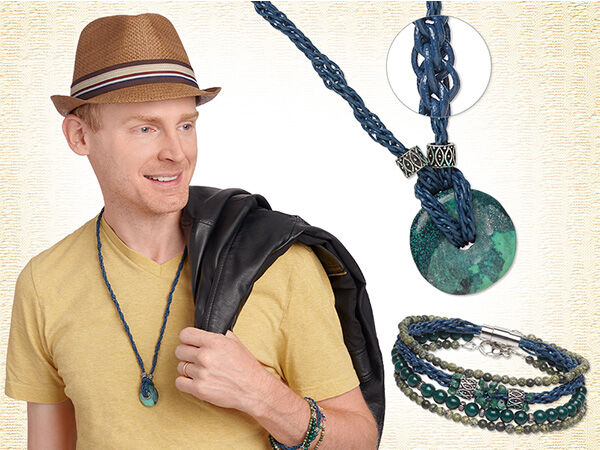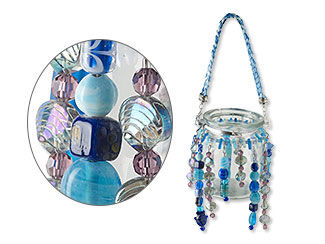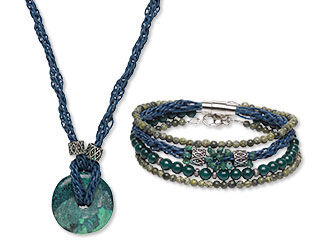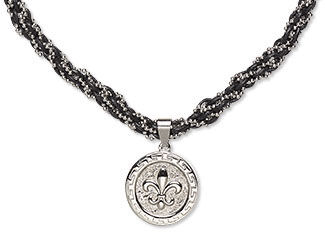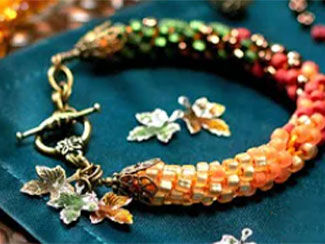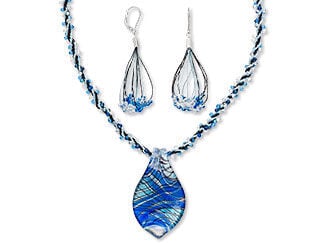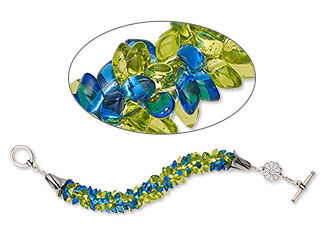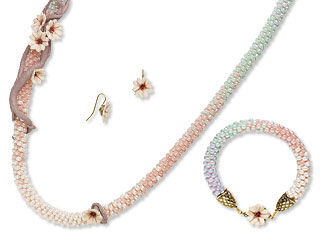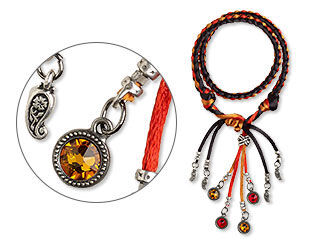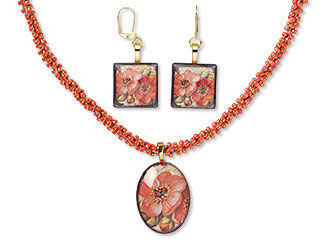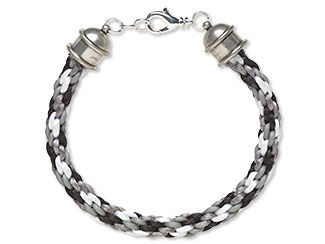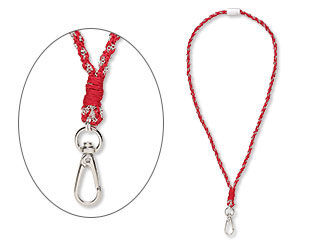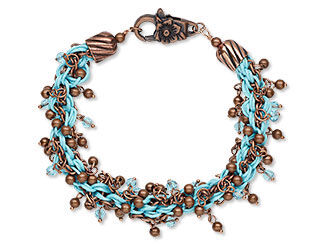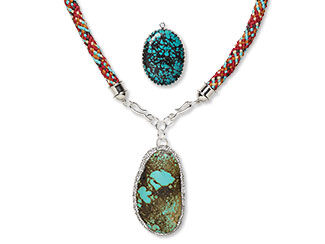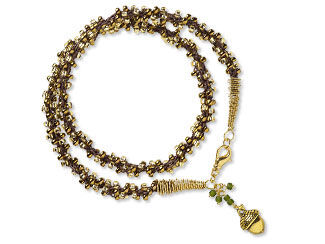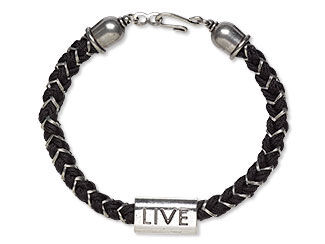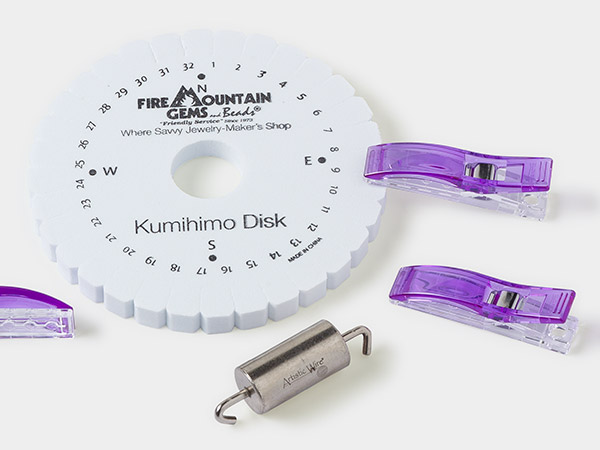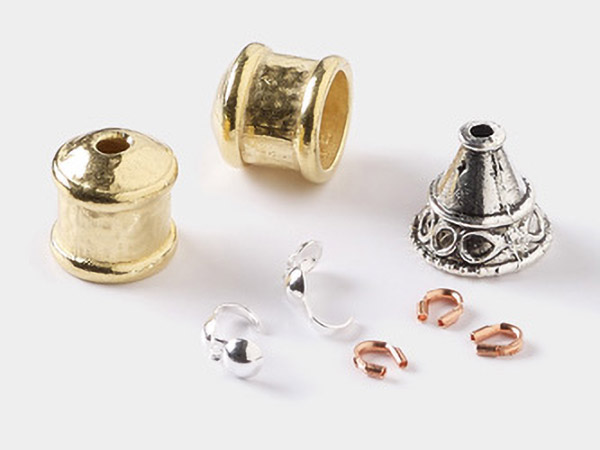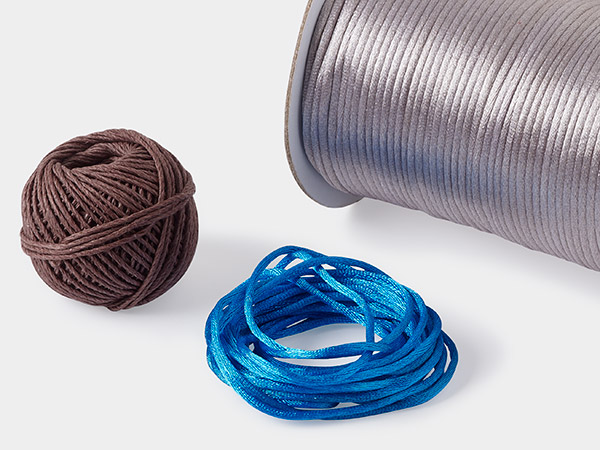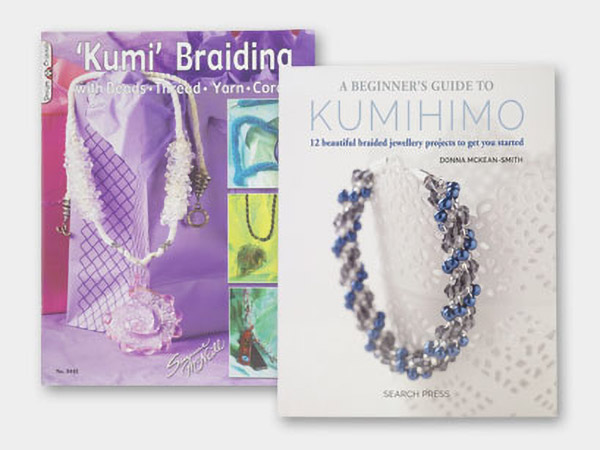Kumihimo 101: A Cord-Making Technique for Jewelry
It means "gathered threads" and it's around 1,500 years old.
Kumihimo is an ancient art with modern applications.
History of Kumihimo
Kumihimo is a Japanese style of braiding that gathers together multiple strands of thread, cord, ribbon or a combination to create a range of cords in different sizes, shapes, patterns and uses.
Kumihimo likely began as a form of finger-loop braiding that grew in complexity over the centuries. Its earliest stages have been lost to obscurity, as it was considered a "lesser art." As the braids and braiding techniques became more complicated and intricate, the significance attached to them increased as well. Tools such as the marudai (the round wood stand) and takadai (the flat loom) were developed to accommodate the ever-growing possibilities.
With new shapes and complexities came new uses. What was once mere cords to lace together samurai armor became part of formal wear, especially women's dress kimonos. When made using specific colors, they were used to ward off dangerous spirits, embellish jewelry, seal the tea containers and wrap sword hilts. Some would be soaked in ice water for a full day to tighten the braid when used on swords. It's claimed that one of these "tightened" cords can be used to tow a car without breaking!
Today, kumihimo is considered one of the traditional Japanese arts, with specialized schools teaching age-old techniques and patterns never published in books. The Japanese royal family purchases handmade obijime (a flat form of kumihimo) for their court kimonos from a number of these schools. There are even cords specifically for the Emperor and Empress which can never be photographed!
Braiding Kumihimo Cord
While traditionalists use the marudai and takadai, western interest in kumihimo braiding has expanded tool options for the beginner. Makiko Tada, a sensei of the art, needed an inexpensive "starter" marudai for her students. After some trial and error, she invented the kumihimo foam disk. Lightweight, affordable, portable and easy to use, it immediately became popular with artisans around the world—who quickly found contemporary uses for kumihimo braids in a range of shapes and styles.
Traditional looms like the marudai and takadai (as well as less well-known looms like the ayatakadai and karakumidai) use wooden spools (called tama) to weight and organize the incoming threads, while weighting the resultant cord using an omori. Modern foam kumihimo disks organize threads using Huggy Spools® and similar products, with weights attached to the tip of the outgoing braid to replace the original omori.
Newcomers to the art of kumihimo often begin with a range of instructional books or our slate of free step-by-step tutorials (including videos). After you get the basics down, it's time to play.
Learn how to make a standard 8-cord spiral braid, the first braid most people start with when beginning kumihimo. Rose walks you through the steps of this fun and surprisingly easy technique.

Finishing your kumihimo designs can be a charming addition to the overall design of your braided piece. Chris walks us through 3 techniques to compliment your creations.

Now What?
One of the popular western developments with kumihimo is the addition of beads to the cord during braiding. Beads can be added to only one thread, to all of one color, to all threads—or any combination of them. Beaded drops, tiny charms and even "dragon scale" pieces have been used. This creates a variety of surface effects—depending on the type of bead(s) used—that becomes a significant part of the overall design for jewelry makers. That variety and versatility is part of why our own in-house designers love using kumihimo in jewelry they make for us as well as for themselves.
"The amount of the different types of materials that can be used is endless. I have combined chain/wire with string, leather, ribbon, yarn... Also, by changing the thickness or the combinations of colors you can use the same basic kumihimo braid and have it look totally different."
- Jude
"I think my favorite thing, though, is the Zen quality of the braiding. It can be very meditative and relaxing. When I have finished a braid, I feel as if I have created something beautiful out of basically nothing. I have been told—though I have not verified it—that there is a monastery dedicated to kumihimo as a form of meditation."
- Rose
"I enjoy creating, but also enjoy the wearing. The softness of satin cord around your neck is always enjoyable and beautiful."
- Esther
Kumihimo braiding techniques, both round and flat, open a wide range of design options to your creations. Add this ancient art to your jewelry-making skill set, then experiment to see what intricate beauty you can make from gathered threads.
Shop for Your Materials Here:
Have a question regarding this project? Email Customer Service.
Copyright Permissions
All works of authorship (articles, videos, tutorials and other creative works) are from the Fire Mountain Gems and Beads® Collection, and permission to copy is granted for non-commercial educational purposes only. All other reproduction requires written permission. For more information, please email copyrightpermission@firemtn.com.
